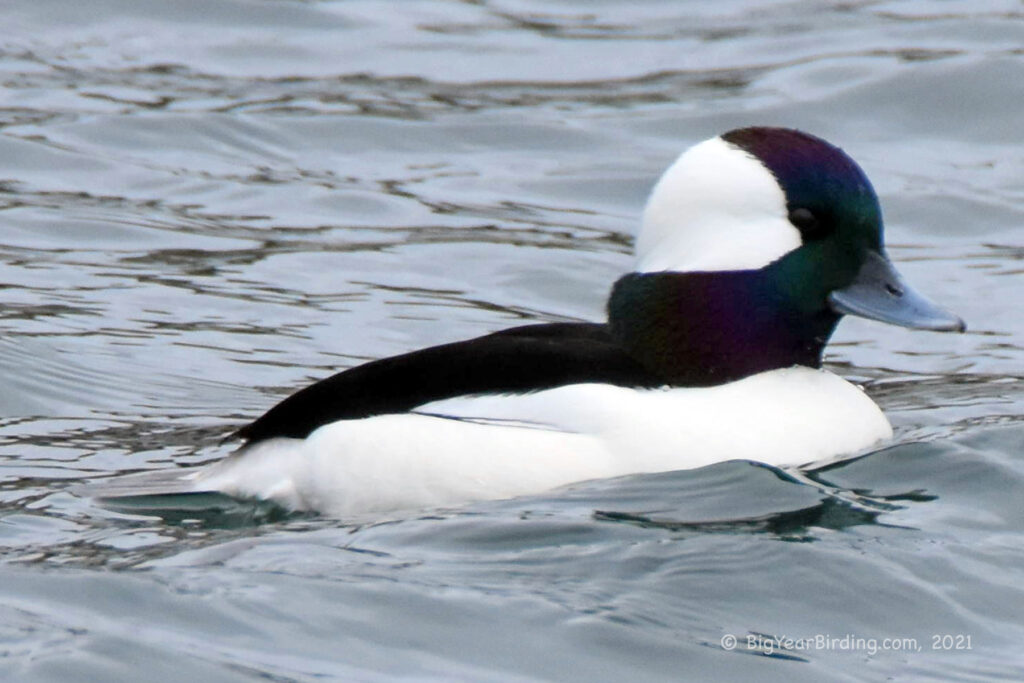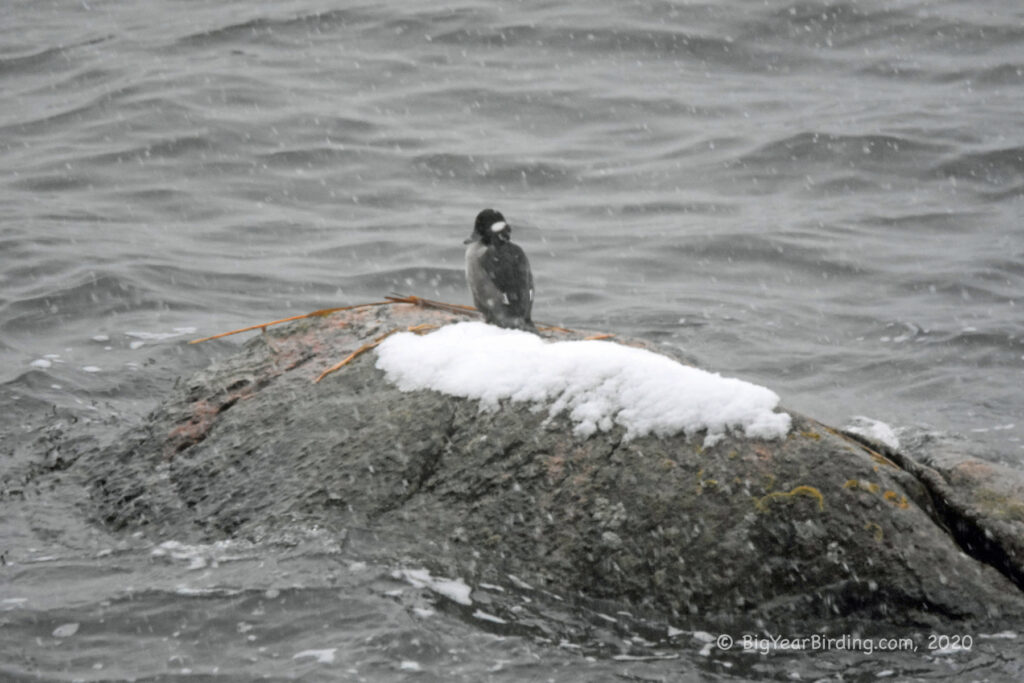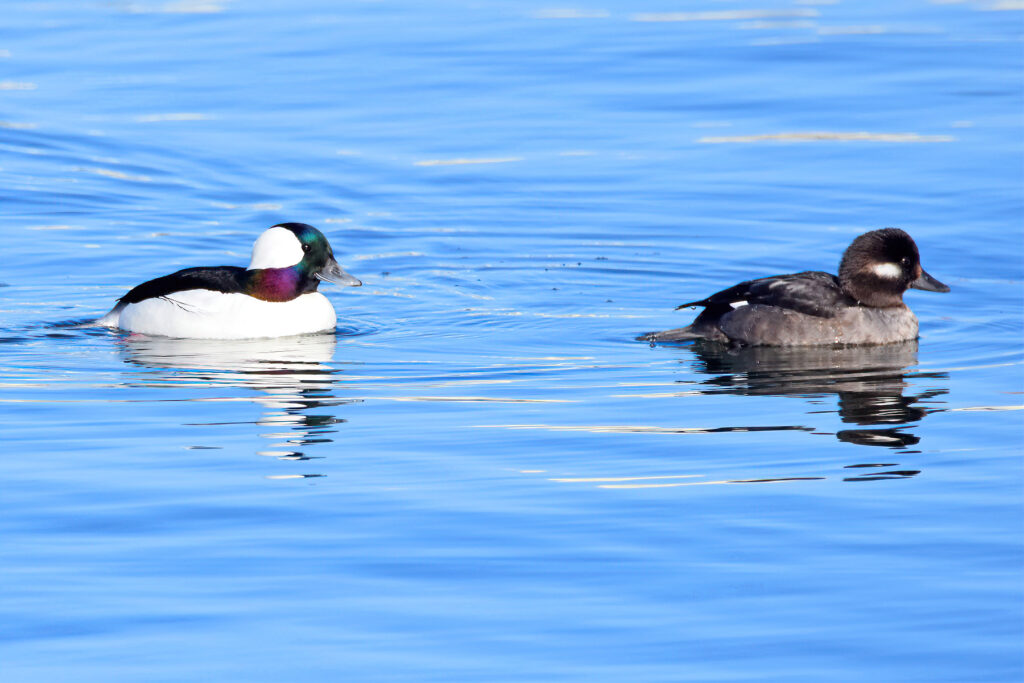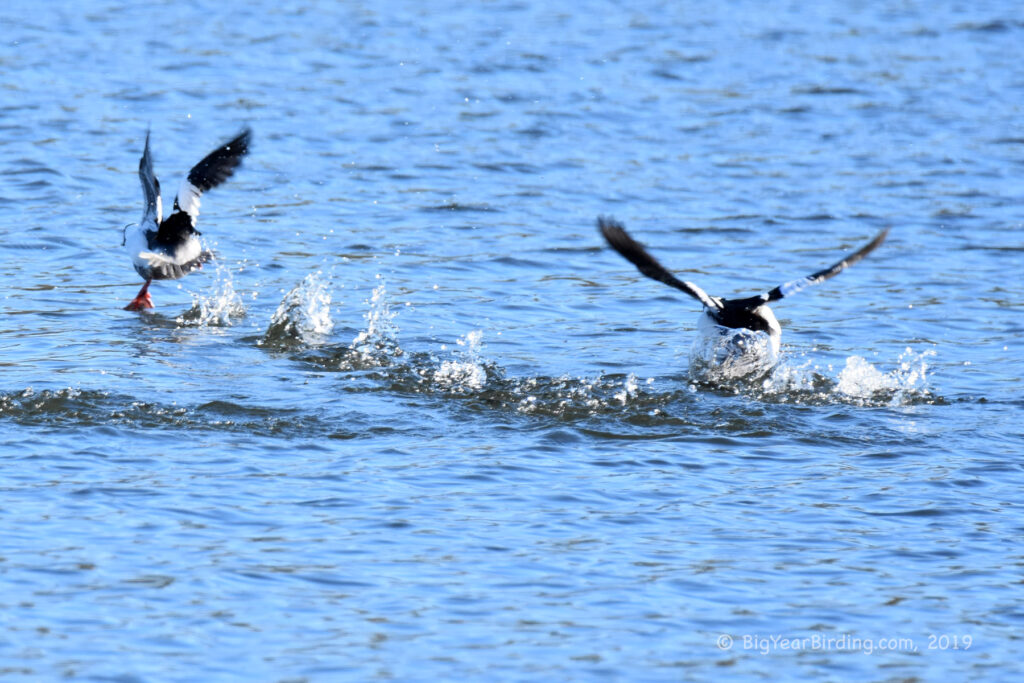
The Bufflehead (Bucephala albeola) is a small, attractive diving duck native to North America. The male and female Bufflehead have distinct markings, with the male having a white head and a black back and the female having a brownish-gray head and a dark back. These birds are quite small, measuring only 12-15 inches in length and weighing in at a mere 9-19 ounces. Their small size makes them one of the smallest diving ducks in North America.

Buffleheads are known for their unique courtship displays, where the male will rapidly bob his head and swim in a circle around the female. They are also highly agile swimmers and divers, able to dive to depths of up to 60 feet to catch small fish and aquatic invertebrates. In the winter, Buffleheads can be found in shallow coastal waters, estuaries, and freshwater marshes across the southern United States, Mexico, and Central America.
Despite their small size, Buffleheads are quite hardy and are able to migrate long distances. They breed in the boreal forests of Canada and Alaska, where they form monogamous pairs and lay clutches of 6-15 eggs. After the breeding season is over, Buffleheads begin their fall migration, traveling south to wintering grounds in the southern United States, Mexico, and Central America. They typically follow the coastlines during migration and can also be found on inland bodies of water.

Buffleheads are a popular species among birdwatchers due to their small size and striking plumage. They are also an important part of the aquatic food chain, serving as prey for larger fish, birds, and mammals. Despite their resilience, Bufflehead populations have declined in some areas due to habitat loss and degradation. Conservation efforts are underway to protect the remaining populations and their habitats, ensuring that these charming little ducks continue to grace North American waters for generations to come.

